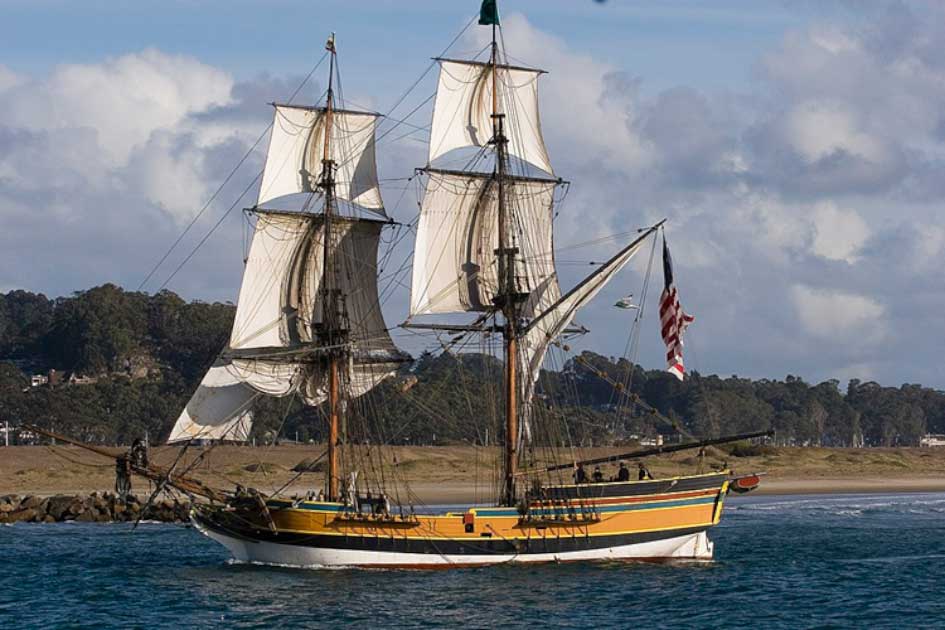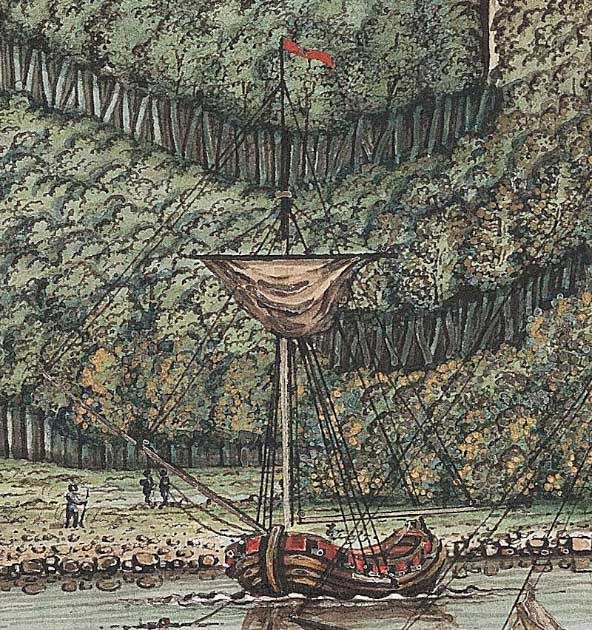Human history is a rich tapestry, but not always a dignified one. Alongside the great speeches, the brilliant leaps of intuition and knowledge, and the devastating battles fought for power and control, there have been many moments of embarrassing accidents, reducing the saga of humanity to a farce.
One such moment befell the American sea captain, John Kendrick. Not all great men die well, and this was certainly the case for Kendrick, who was accidentally shot by a cannon fired in his honor.
Kendrick was a commissioned naval officer during the American Revolutionary War and had conducted many successful trade expeditions. However, the story of his death is, somewhat tragically, what he is most remembered for today.
Who was John Kendrick to merit such an honor, and what happened to him that day?
A Man of the Seas
Born in 1740, John Kendrick developed close ties with the sea quite early in his life. His father, Solomon Kendrick, was the master of a whaling vessel, and John started going with his father to sea from the tender age of 14.
By the age of 20, he was working in the booming whaling industry of St. Lawrence. During his teenage years, John Kendrick would sail out of what is now the town of Orleans in Massachusetts, then far wilder and known as the Potonumecut area.
He developed friendly relationships with the native tribespeople in the area, relationships which would go on to later support his exploration and developing relationships many thousands of miles away in the Pacific Northwest region. Clearly John Kendrick has a taste for adventure.

At the age of 22 in 1762, he served on a militia mission in the French and Indian War under his cousin, Jabez Snow. However, it was not long before he was drawn into the atmosphere of dissent, which was developing at alarming rates in the early days of the American Revolution. The revolutionary spirit of John Kendrick and his knack for the seas led inexorably the next chapter in his life.
A War Hero
John Kendrick was an American patriot to the core. In his early 30s, with dissent in the air, he participated in the Boston Tea Party in 1773. Valuable due to his maritime experience, he went on to command several different ships in the course of the American Revolutionary War.
- Medical Malpractice and the Mysterious Death of George Washington
- The Suspicious Death of William II: Who Killed the Rufus?
After being officially commissioned in May 1777, he served as commander of a privateer of the Continental Navy. Kendrick leapt at the opportunity, outfitting a brigantine with a crew of 104 members and successfully disrupting British shipping channels. During this time, he also captured vessels which helped grow his fame and line his pockets. After returning home in 1778, John Kendrick was considered a hero.
Kendrick sailed back to war and glory in early 1779, but was promptly captured by a British ship named the Brutus. However, Captain Kendrick and his crew made a favorable impression on the British captain and they were released on a boat.
The undying fighting spirit of John drove him to France and then back to America in 1779. Subsequently, John participated in many other adventures during the war until it ended in 1783.
After the War
Once the war ended, John Kendrick returned to the whaling and coastal shipping business. He made the most of his naval skills during this time in the New England coastal trade. And this was an exciting time to be a mariner: the third round-the-world voyage of British explorer James Cook had revealed the possibility of trade routes which could transport sea otter fur from the northwest coast of America to the Atlantic.
Many merchants sent various expeditions to follow Captain Cook’s route, seeking to exploit these new trade opportunities. Kendrick was a valuable asset and he was commissioned as the captain of the expedition ship Columbia Rediviva which sailed along with a smaller ship, the Lady Washington, commanded by Captain Robert Gray. John Kendrick was in overall charge as the commander of the whole trading expedition, and both vessels included cargoes of trade goods alongside other documents.
After a difficult passage around Cape Horn at the southernmost tip of South America, the ships progressed north into the Pacific and landed at Nootka Sound on the North American coast in September 1788, where Kendrick set the foundation of another significant chapter in his life. John Kendrick decided to spend the winter at Nootka Sound with his crew and interacted with the local tribe chiefs.
Upon the arrival of a Spanish warship, Princesa, in May 1789, Kendrick welcomed the commander Esteban Jose Martinez. However, the situation worsened and the role of Kendrick in these affairs ultimately ended up in what is known as the “Nootka Crisis”.
Martinez had arrived to claim Nootka Sound for Spain, and first encountered the Lady Washington which had little right to be there. The expedition’s principal ship, the Columbia, was still at anchor in harbor and ran the risk of being confiscated. But Kendrick, as a revolutionary hero, made a good impression as a foe of the British.
- A Death in Deptford: Who killed Christopher Marlowe?
- Taken by the Ice: What Became of the Franklin Expedition Crew?
It has been suggested that some of Martinez’s actions, in particular the seizing of many British vessels in the area, was carrying out due to provocation by Kendrick with the support of local tribes. Whether this was the reason or not, Kendrick successfully removed his competitors and left himself two perfectly good ships for the fur trade in the northwest coast.
An Unfitting End
The expeditions of John Kendrick along the northwest coast earned him more fame and fortune. He also traveled on a voyage to China and discovered the possibilities of pearl and sandalwood trade in the Orient.

He returned to the Pacific Northwest in March 1791 and ended up in a conflict with the local Haidas tribe. After repulsing the attack, he turned south and obtained more fur by paying higher prices to the local Native Americans for their fur. Subsequently, Kendrick met up with Robert Gray once more and sailed off for China and Macau in September 1791.
After spending 14 months in Macau, investing the time during summer for trading along the coast, and mounting several other trading expeditions, Kendrick docked in Honolulu Iin Hawaii, then known as Fair Haven, in December 1794. He had arrived right on time to support a local tribal chief in warding off an invasion attempt by a rival chief. Captain Kendrick’s Lady Washington and a British ship, The Jackal, helped the local chief thwart the invasion.
The next day, Kendrick ordered his crew to fire a 13-gun salute to celebrate the victory. He was observing the festivities and eating breakfast in his cabin at the rear of the Lady Washington. The Jackal also returned the salute to honor Captain Kendrick’s victory by firing a cannon volley.
However, no one had checked the cannon before launching it, and it had been loaded with grapeshot, a particularly nasty ammunition designed to kill and main people. The cannon fired this deadly barrage across the deck of the Lady Washington, shattering the windows of Kendrick’s cabin.
Kendrick and the officers with him were killed where they sat by the deadly barrage, and many others besides were injured and killed on the deck. So ended the career of one of the great sailors on the American era of exploration, not with a whimper but a bang.
Top Image: John Kendrick was killed by a cannon fired to celebrate his victory. Source: Helivideo / Adobe Stock.
By Bipin Dimri